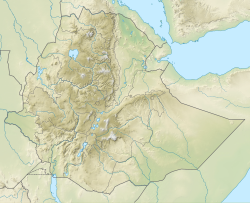| Usno Formation | |
|---|---|
| Stratigraphic range: Pliocene | |
| Type | Geological formation |
| Unit of | Omo Group |
| Underlies | Kalam Formation |
| Overlies | Mursi Formation |
| Lithology | |
| Primary | Sandstone |
| Location | |
| Coordinates | 5°18′N36°00′E / 5.3°N 36.0°E |
| Approximate paleocoordinates | 5°06′N35°42′E / 5.1°N 35.7°E |
| Country | Ethiopia |
| Extent | Omo Subbasin Turkana Basin |
The Usno Formation is a palaeontological formation located in Ethiopia. It dates to the Pliocene period. [1]
